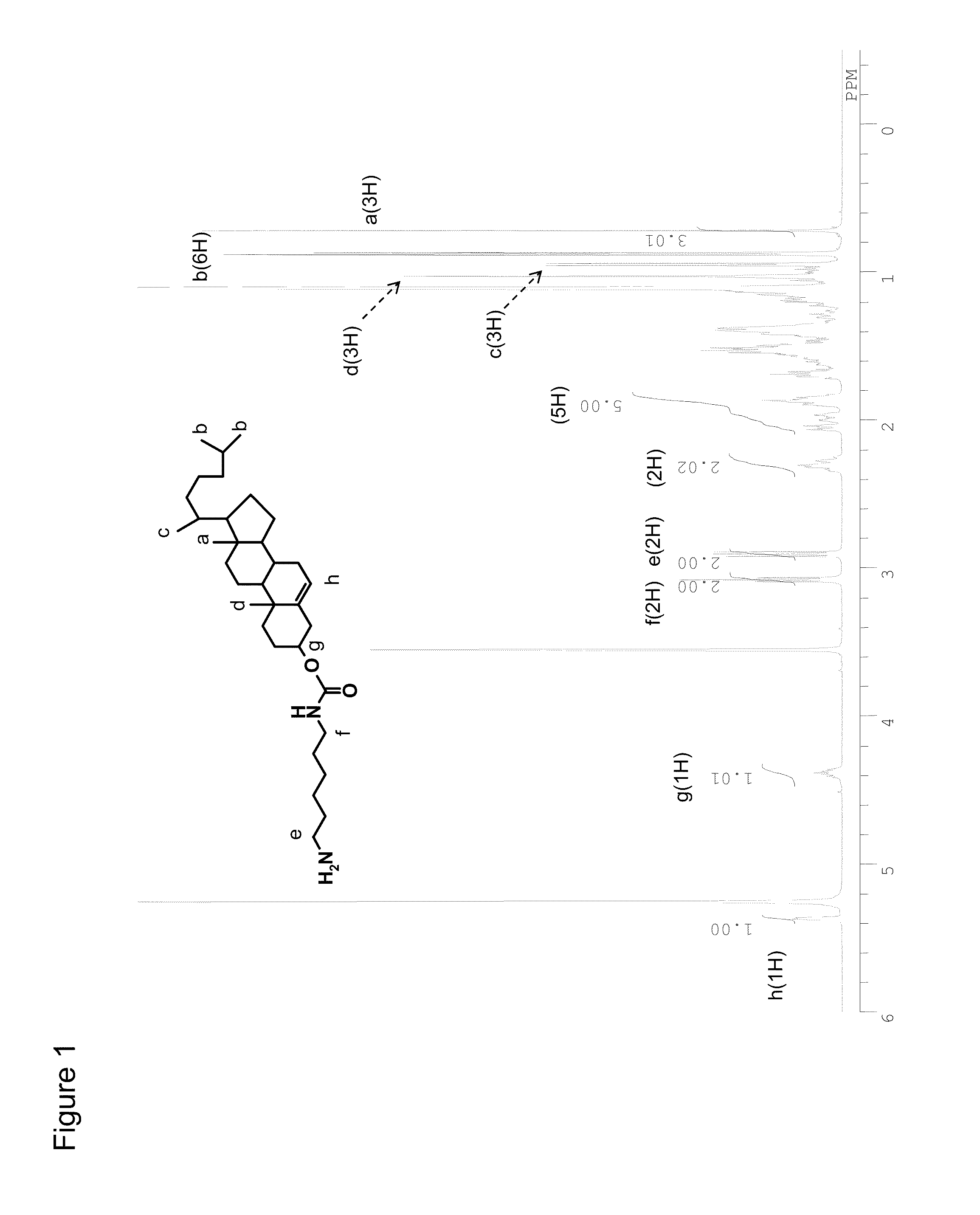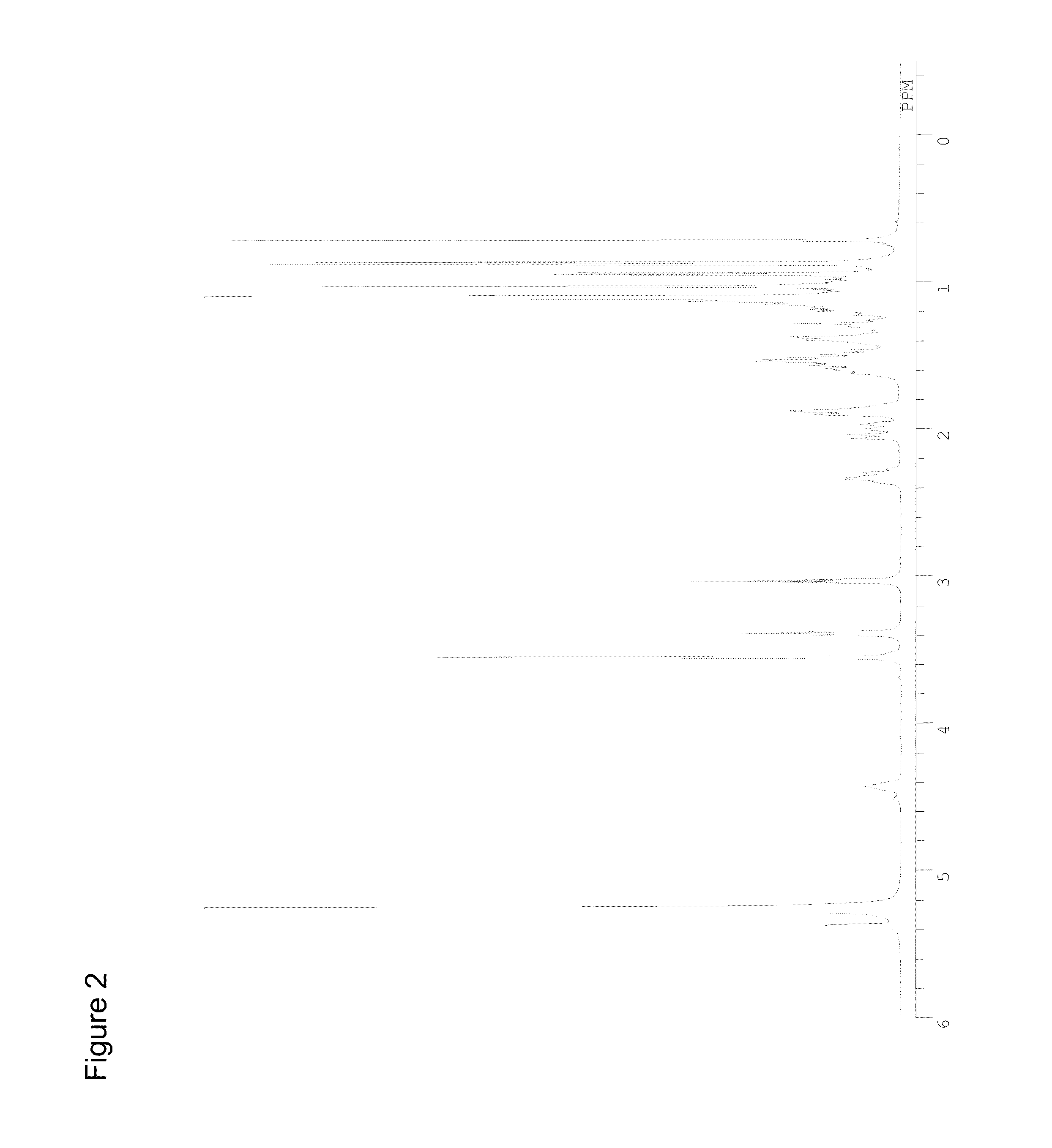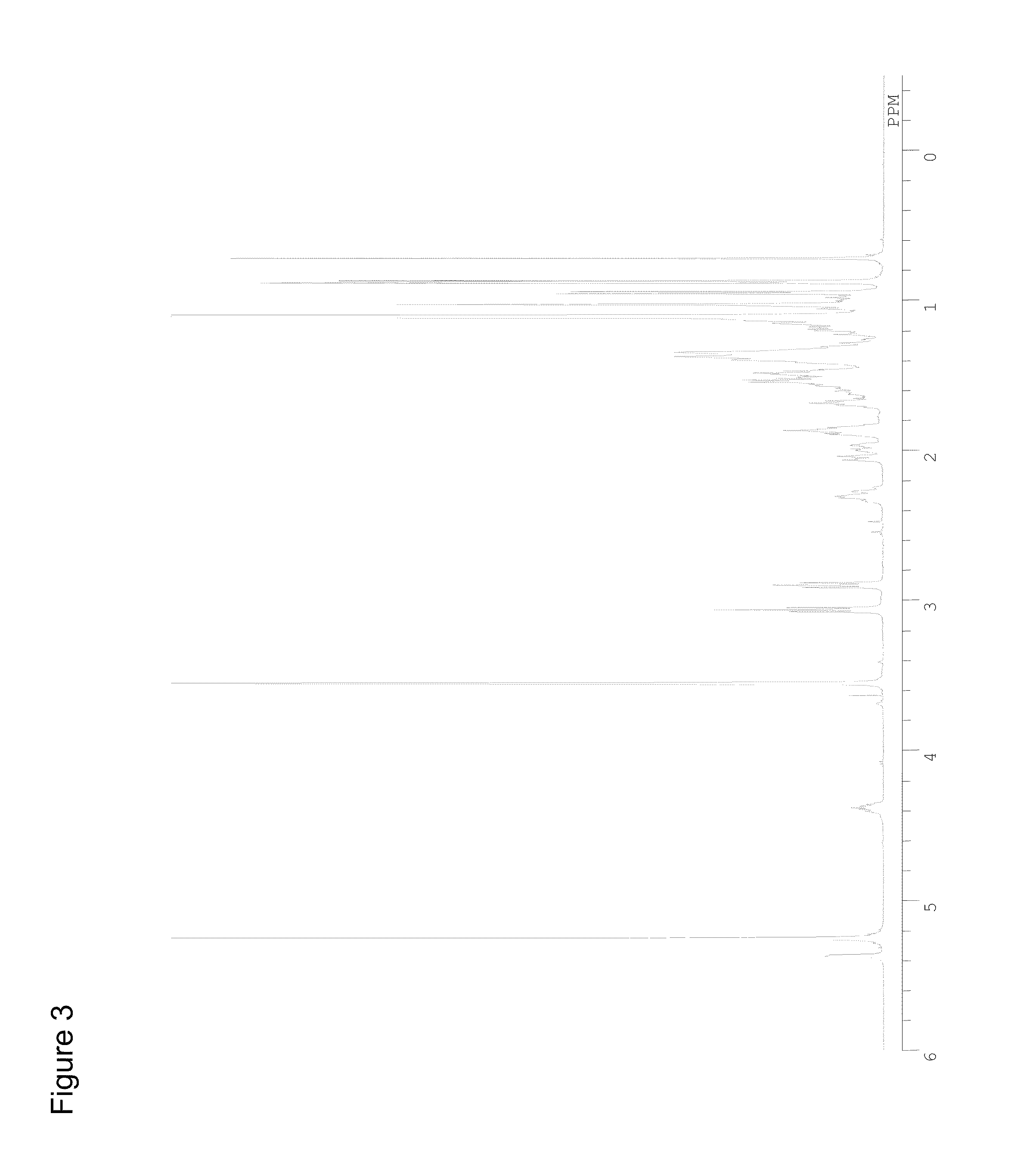Hyaluronic acid derivative and pharmaceutical composition thereof
a technology of hyaluronic acid and derivatives, which is applied in the direction of sugar derivates, organic chemistry, peptide/protein ingredients, etc., can solve the problems of short half-life in blood, unstable proteins and peptides in the body, and inability to absorb proteins and peptides easily from the gastrointestinal tract, etc., and achieve the effect of prolonging the residence time in blood of the drug
- Summary
- Abstract
- Description
- Claims
- Application Information
AI Technical Summary
Benefits of technology
Problems solved by technology
Method used
Image
Examples
example 1
Preparation of Cholesteryl Group-Introduced HA Derivative
example 1-1
Preparation of Cholesteryl 6-aminohexylcarbamate Hydrochloride
[0423]To a solution of cholesteryl chloroformate (3.37 g, 7.5 mmol) in anhydride dichloromethane (20 mL), triethylamine (TEA, 1.05 mL) was added in an argon atmosphere and stirred. On ice, 6-(t-butoxycarbonyl)amino-1-aminohexane (1.12 mL, 5 mmol) was added by dropping, stirred for 30 minutes on the ice, and then heated to room temperature, and the mixture was stirred overnight. The reaction mixture was washed with ultrapure water and with brine and then dried with anhydrous magnesium sulfate, and thereafter the solvent was distilled off under reduced pressure. The resulting residue was purified by silica gel column chromatography (eluent: ethyl acetate:n-hexane=1:4). The fractions of an intended product were combined together, and the solvent was distilled off under reduced pressure.
[0424]The resulting residue was dissolved in ethyl acetate (40 mL), and 4N hydrochloric acid / ethyl acetate solution (40 mL) was added and sti...
example 1-2
Preparation of Cholesteryl 2-aminoethylcarbamate Hydrochloride
[0425]Except that 2-(t-butoxycarbonyl)amino-1-aminoethane (0.79 mL, 5 mmol) was used in place of 6-(t-butoxycarbonyl)amino-1-aminohexane and ethyl acetate:n-hexane=1:2 was used as an eluent in the silica gel column chromatography, the procedure of Example 1-1 was repeated to give a hydrochloride (2.3 g) of cholesteryl 2-aminoethylcarbamate (Chol-C2). The 1H-NMR spectrum (JNM-ECA500 JEOL Ltd.; EtOH-d6) of the product is shown in FIG. 2.
PUM
| Property | Measurement | Unit |
|---|---|---|
| Fraction | aaaaa | aaaaa |
| Fraction | aaaaa | aaaaa |
| Fraction | aaaaa | aaaaa |
Abstract
Description
Claims
Application Information
 Login to View More
Login to View More - R&D
- Intellectual Property
- Life Sciences
- Materials
- Tech Scout
- Unparalleled Data Quality
- Higher Quality Content
- 60% Fewer Hallucinations
Browse by: Latest US Patents, China's latest patents, Technical Efficacy Thesaurus, Application Domain, Technology Topic, Popular Technical Reports.
© 2025 PatSnap. All rights reserved.Legal|Privacy policy|Modern Slavery Act Transparency Statement|Sitemap|About US| Contact US: help@patsnap.com



